the time we drove to montevideo.
Even after all this time, our experience in Montevideo remains vivid — a trip that refuses to fade.
The time it’s taken me to write about our trip to Montevideo is laughable.
It’s been at the back of my mind since my wife and I started the long drive home on the last day of 2022. For a myriad of reasons, whenever I’ve sat down to try to write something coherent, I’ve failed. And who knows, maybe I’ll fail again this time?
My Google Docs is full of half-written posts, and the pictures I took during our time in Uruguay have long been pushed further and further down in my phone’s gallery.
And so, I’ll try again. I’ll try to share as much as I can about the trip that we took two and a half years ago, and you, dear Substack reader, will be the first to hear about it.
If my memory serves me correctly, Google Maps had calculated that it would take us 13 hours to drive to Montevideo. However, Fernanda was quite right to correct this when informing me that, at least in South America, Google often vastly underestimates driving times. In reality, factoring in an overnight stop in Pelotas, it took us approximately 16 hours of driving time to arrive at our seafront hotel in the Uruguayan capital.
Sure, there were other stops along the way, such as pulling over for gas, dealing with border crossings, and stopping to prepare the obligatory chimarrão (a traditional South American drink made from yerba mate, typically served in a round gourd with a metal straw).
The best stop, however, was the one we made shortly after setting off again after our night stop in Pelotas. As the road opened and traffic began to dissipate, a couple of manmade rivers streamed parallel along either side of the road, and in these rivers were hundreds (and I mean hundreds) of Capybara. All were either splashing about in the water, rolling on muddy riverbanks, or shepherding their herds of little furbabies, and it was so entertaining to watch them go about their business without a care in the world. An awesome moment ruined only by a swarm of incessant green flies, not too dissimilar to ladybugs, hellbent on terrorising anything that moved in their vicinity.
Note from my wife: “Anthony, THIS is why you never finish a piece. How much have you just written and you’re NOT EVEN IN MONTEVIDEO YET?!!”
Sorry Fernanda, you’re right.
Between the Capybaras and our hotel in Montevideo, we drove hundreds of kilometers, past derelict houses and churches, the occasional small village, and wild guinea pigs getting their fill on the dangerous roadside grass — all while the mid-afternoon sun blazed down on top of us and our car’s AC struggled to cope.
We arrived in Montevideo at around 8 PM, with our first glimpses involving a partial tour of La Rambla — a scenic 22.2 kilometre road that hugs the city's coastline and serves as both a local favorite and a major tourist attraction. Our hotel was around one-third of the way along this stretch of road, and so we were soon pulling off and checking in.
As is often the case when I travel, the hotel room was simple and good enough for what we needed. Our room wasn’t accessible as there wasn’t a roll-in shower, but the hotel did have a ramped entrance and an elevator to all floors. For those (unlike us) with a larger budget and for whom near-perfect accessibility is imperative, consider Radisson Montevideo Victoria Plaza Hotel or Hyatt Centric Montevideo.
It was the middle of summer, and back home we’d been struggling hugely to escape the heat, so in Montevideo it was welcome relief to finally have a nice sea breeze and to be in a city where the sun seemed a little more bearable. On the morning of our first full day, we headed out without the car and soon came across a large grassy slope that led to an uneven stone pier.
Much like in our hotel, and again, remembering that I am in a privileged position to act this way, we decided to cautiously make our way down the slope and head onto the pier in search of a unique view of the area we were staying in.
When traveling, I’ve always had a relaxed attitude. Whether it be down to sheer laziness or a willingness to just go with the flow, I’ll let you decide. For the most part, planning is kept to a minimum, and thankfully, my wife seems to be of the same ilk. Of course, our approach may mean we miss out on seeing certain things, through lack of preparation, but on the other hand, when you’re not tied to a strict itinerary, you often uncover a gem of a place, here and there.
After ducking between the folks that were fishing on the pier and managing to not fall into the choppy waters, we headed into town in search of coffee, wifi, and a place to get our bearings. For a man of few plans, I find coffee to be a great plan encourager, and with the wifi that accompanied the cappuccinos, we garnered a sense of what was around us and headed next to the Plaza Independencia where, alongside dozens of other tourists, we took some snaps of the Puerta de la Ciudadela (City Gate — built by the Spanish colonisers). We spent some time looking around the many impressive buildings that surrounded the plaza, including the gigantic Palacio Salvo and the numerous colonial homes. In the centre is Artigas Mausoleum and statue, with the remains of José Artigas, a hero to many Uruguayans, housed underground (sadly inaccessible).
The plaza leads to Montevideo’s old town, where we eventually made our way and visited the Mercado del Puerto, which is reminiscent of many of the public markets found in this region of South America.
The old town pulses with life, with an abundance of stalls selling everything from fresh fish to bathroom rugs. It’s also where you’ll find a lot of great food, and as one bus load of tourists packed up and shipped out, we took their place at a restaurant that spilled out onto the street. Ravioli with a simple sauce was my choice for lunch, washed down with the tartest lemonade I’ve ever had in my life. Talk about a palate cleanser.
We kept in the spirit of our lazy traveling and took a peaceful stroll down to the water’s edge, to enjoy the cooling spray from the sea sloshing against the promenade, before jumping back in our car at 5 PM and retiring to our hotel (yeah, I told you… lazy).
The next morning, after getting ourselves pulled together at the sprightly time of 11:35 AM, we made our way along La Rambla to check out Punta Carretas Lighthouse, which wasn’t accessible, but is still cool to visit and gave us yet another angle of the sea and the city's coastline.
Speeding through to prevent this post from becoming too listicle and self-aggrandizing, and in some part to allow the pictures to do most of the heavy lifting, I’ll try to round up day two in a couple of succinct paragraphs.
After a brief visit to the city centre cathedral — serene, but not quite converting me to the “seen one, seen them all” crowd — we wound up perusing the pop-up market outside, and Fernanda bought two or three Agatha Christie books, translated into Spanish. I, as is almost always the case, came away with nothing — partly due to a longstanding reluctance to spend any money on myself, and partly because there’s rarely any decent literature to be found here that’s written in English (my wife putting me to shame, with her purchases of books written in her third language…)
In the afternoon, we visited the Intendencia de Montevideo (City Hall), where a glass elevator scales the outside of the building, much to Fernanda’s horror. At the top, we found accessible toilets (always a win), a café, helpful info points, and a wraparound outdoor walkway filled with fragrant plants and sweeping views. If you're like me and love free city viewpoints, this one’s a must.
After soaking in the scenery long enough to risk a nosebleed, we descended and wandered through yet another plaza (Montevideo is full of them). This time, we were treated to an unfiltered showdown between an elderly woman and a group of laughing police officers. I’ve no clue what sparked her fury, but her yells echoed through the square. Despite the chaos, parts of Montevideo’s architecture were truly stunning — and still vivid in my mind after all this time.
That night, eager to avoid another hotel dinner, and also with me chomping at the bit over the prospect of having genuine tapas for the first time in God knows how long, we got dressed up and headed out onto the town.
The place we found, Demorondanga, was quaint and urban, situated in a residential area, with tables hastily spread on the sidewalk and waiters running to and from an adjacent restaurant across the street. If memory serves, the place across the street was also theirs, only it was a cafe, and they were using the kitchen as a backup on extra busy evenings. Surely a good sign that they’ve been doing a rip-roaring trade?
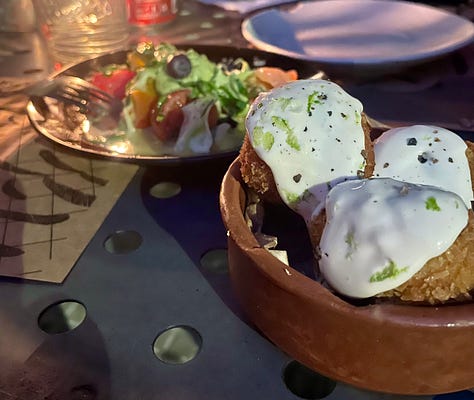

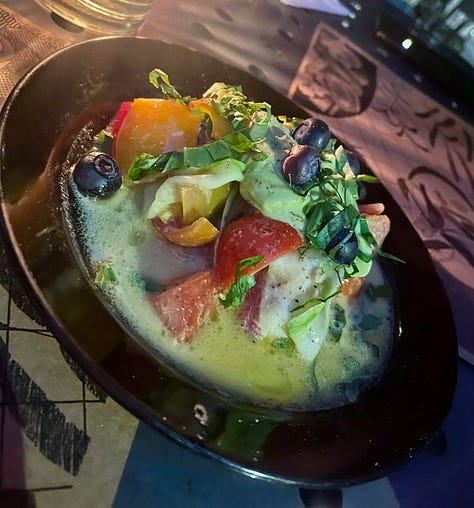
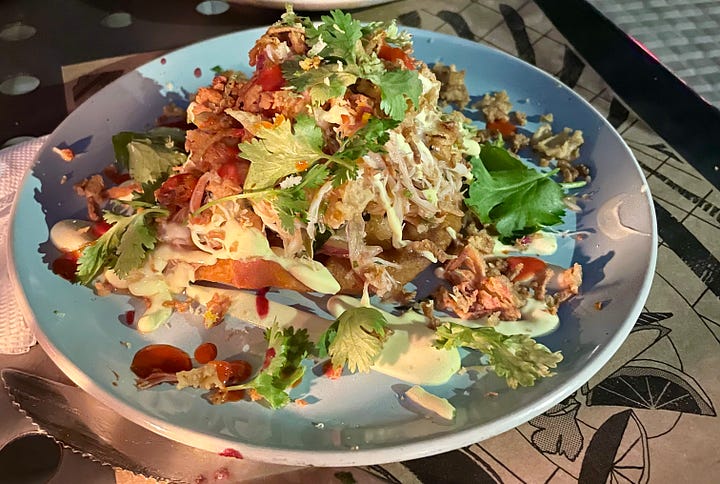
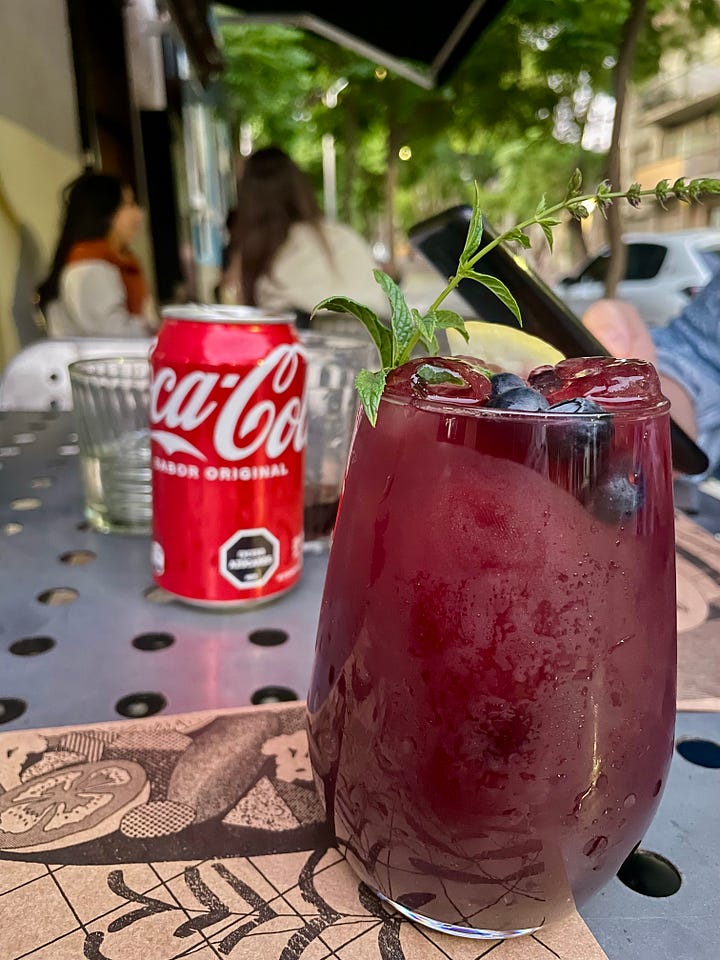
Unfortunately, I can neither confirm nor deny that they have an accessible toilet there, or that it’s even possible to get inside the restaurant with a wheelchair … my feeling is that the answer is probably not. But with accessible seating outside and great service, it was worth the visit, at least in my opinion.
The next day, we packed up our things and began the slow drive home, but not before stopping off to take a closer look at the Carrasco, a compelling building that lit up the night sky when we’d first arrived three days earlier. It’s situated on the seafront and, well, I’ll let the pictures do the talking, shall I?
We weren’t heading home immediately. We stopped once or twice on the way and stayed overnight in Punta del Diablo — quite the juxtaposition to our time in the capital. This shanty little seaside town was warm and inviting, but there was little in the way of urbanised infrastructure, and it most certainly wasn’t all that accessible. Still, as we drove through the wooden huts and watched out for chickens crossing the road (cue me asking Fernanda: “Why did the chicken cross the road?” much to her weary annoyance)…
I could definitely see the appeal of the place — even if we had just killed what we thought was the world's deadliest spider hiding behind a painting above our bed — and that's no exaggeration. I was anal retentive in my investigation, and Google confirmed we were in the right spot. The spider Fernanda clobbered over the head with her sandal looked a lot like it.
That evening, we had our most expensive meal of the trip at Restaurante Il Tano Cucina — a beautifully chill little beachside Italian restaurant, resembling a large surfer shack in some ways and serving the most delicious food. Though I think the price reflected the lack of competition.



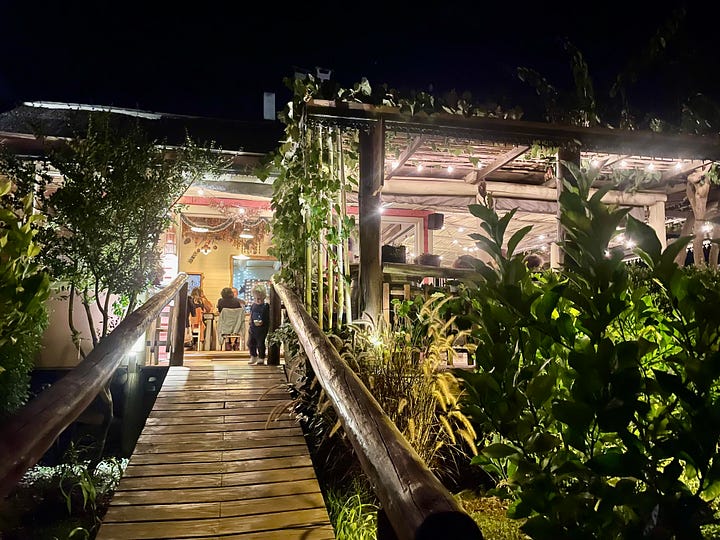
And so, how would I summarise our time spent in Montevideo?
It didn’t dazzle with grandeur, but it lingered in the sea breeze, in the architecture, in the small, surprising ways that good travel often does. Access was hit and miss, but by no means the worst country or city I’ve ever visited. I would highly recommend giving the place a try if you’re looking for somewhere new and a little less densely populated by tourists.
Note from me: Writing this post weekly is unsustainable, taking time from family after a busy week. I’ll now share updates once or twice a month. To see more content, consider joining my Patreon—the more supporters, the more stories I can share.





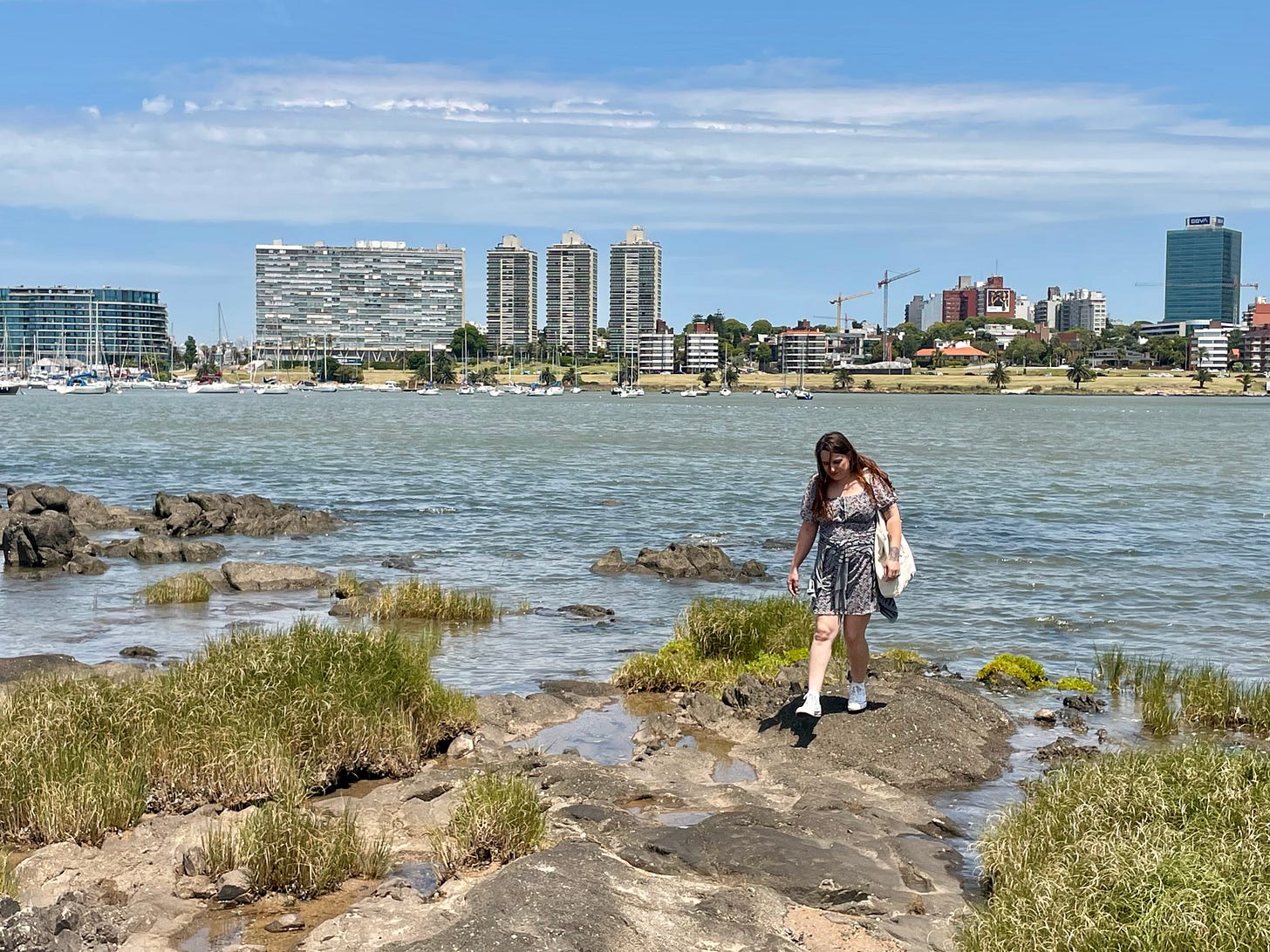
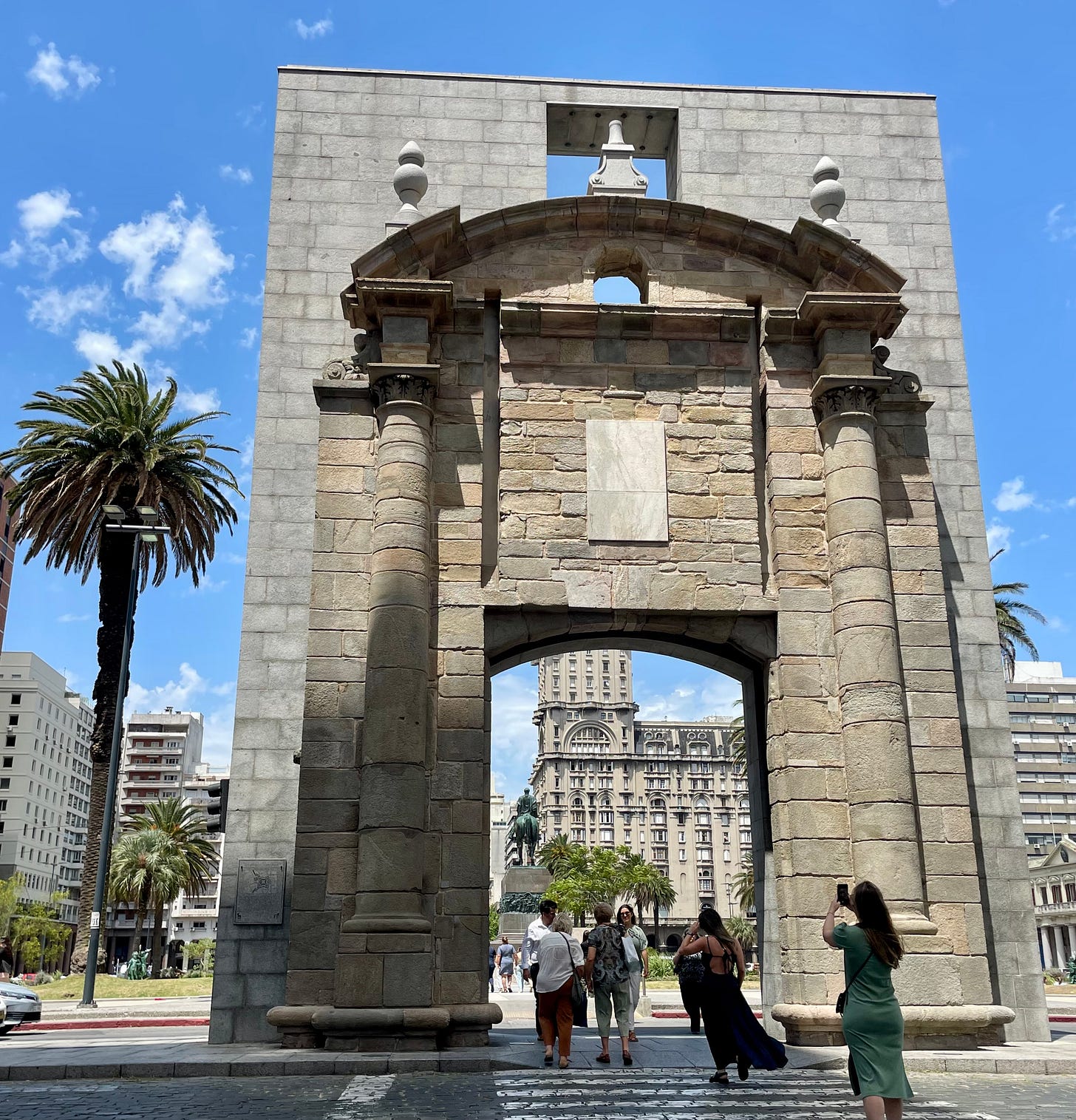


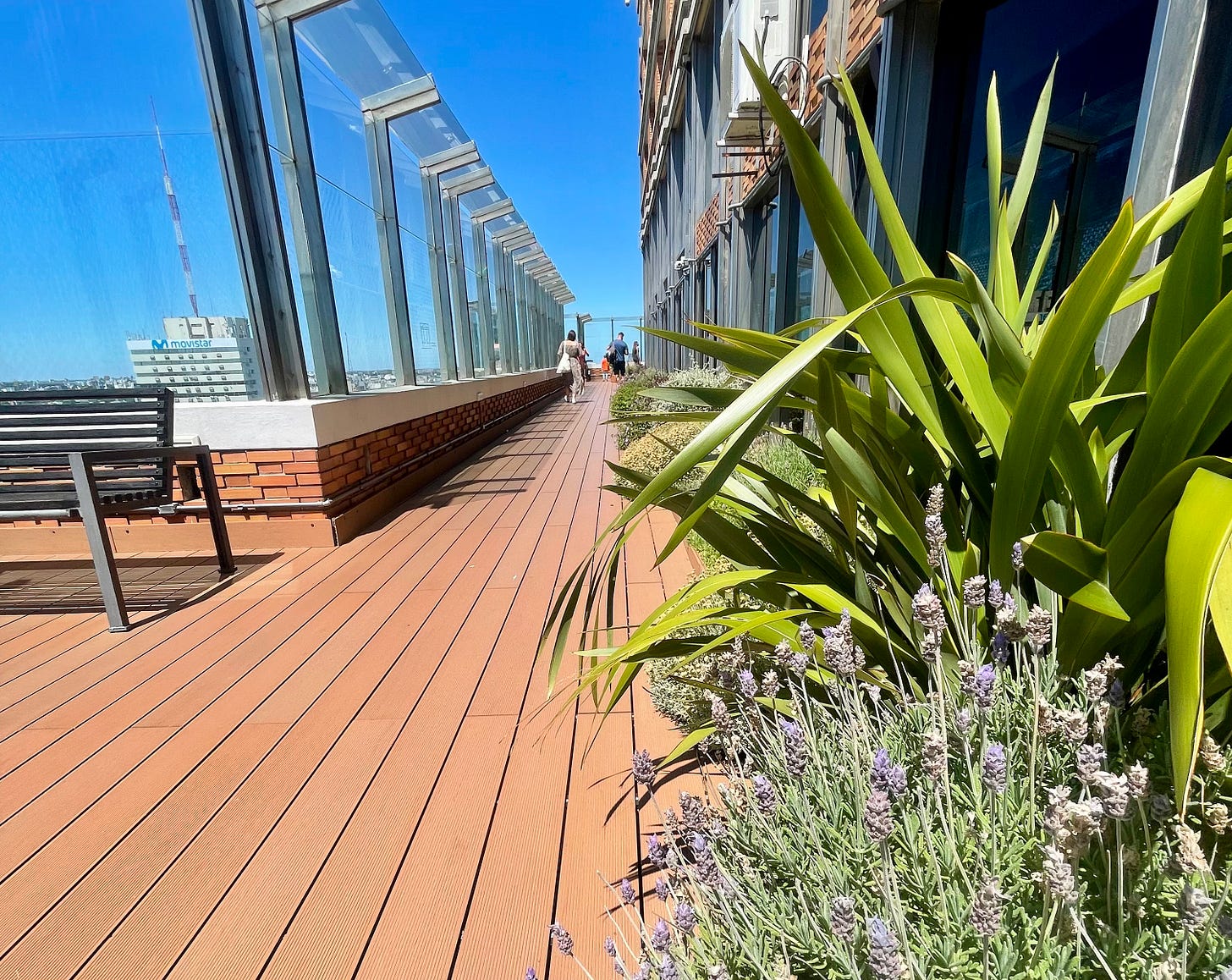
Looks fun... and delicious!